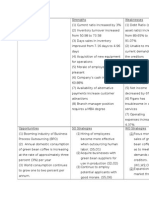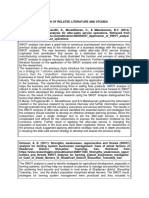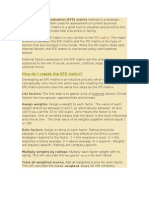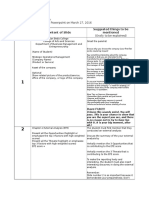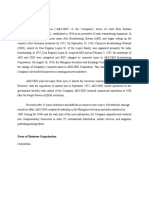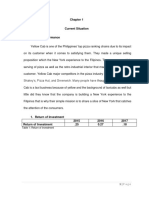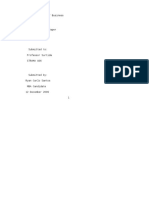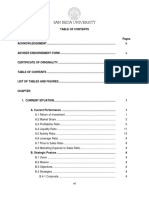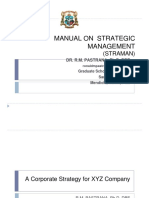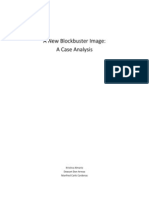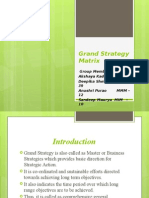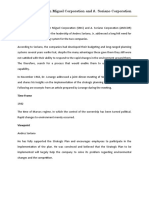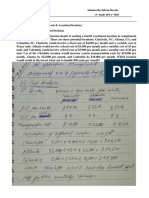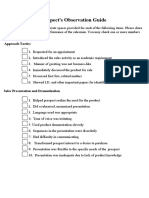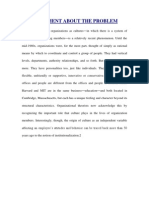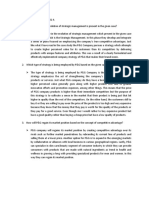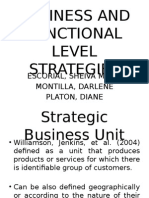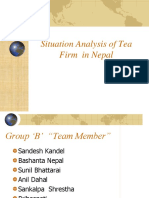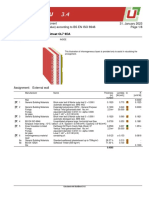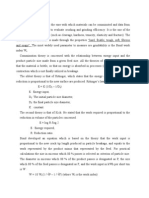Case:
Celestial Seasonings, Inc.
Student:
Page 1 of 9
STRATEGIC AUDIT FACTOR ANALYSIS WORKSHEET
U
STRATEGIC AUDIT
PARAMETER
I.
COMMENTS
CURRENT SITUATION
I.A. Past corporate
performance indexes
Currently growing at 7+ %
54% market share of Herbal tea Initial public offering in 1983.
market.
Acquired Earthwise in 1991.
Profit after taxes has exceeded
8%.
In 1983, scandal due to toxins
found in tea. IPO withdrawn.
In 1984, acquired by Kraft.
In 1988, employees purchased
company from Kraft.
Page 1
�I.B.
Strategic Posture:
Mission
We believe in creating and selling
healthful, naturally oriented products
that nurture peoples bodies and
uplift their souls. Our products must
be
Superior in quality,
Of good value,
Beautifully artistic, and
Philosophically inspiring.
Our role is to play an active part in
making this world a better place by
unselfishly serving the public. We
believe we can have a significant
impact on making peoples lives
happier and healthier through their
use of our products.
Objectives
Ensure consistency of product
taste
Objectives not explicitly stated in the
case text.
To be profitable
Strategies
Expand and diversify vendor base
so that no one vendor can control
the supply chain for any
ingredient.
Target market: women 18-49
Penetration pricing (low cost
provider)
Expand distribution
Integrated manufacturing
Page 2
�Policies
Employee empowerment
Consumer involvement
Cultivated herbs must be organic.
Promote from within.
Preserve the environment.
S.W.O.T. Analysis Begins
II. STRATEGIC MANAGERS
II.A.
Board of Directors
Founder is currently the chairman
of the board.
Vestar Capital Partners unclear
involvement with board
II.B.
Top Management
- Top management is typical
hierarchical environment.
III. EXTERNAL
ENVIRONMENT:
Opportunities and Threats
(SWOT) [Optional External
Factor Analysis Summary,
or EFAS]
III.A
Societal Environment
Economic -
Political Legal
Weather patterns
exchange rates
USA 2nd largest tea consumer
in the world
Socio-Cultural
Health emphasis
Page 3
Child labor practices in foreign
countries
Industry FDA regulated
Anti-trust laws
Monopoly
Trade regulations
Political instability in foreign
countries
Technological
Computer technology
used for consistency in
product.
Microwaves to heat up
tea.
� Environmental concern
Effect of baby boom on target
market.
2-income families
Cultural norms
III.B.
Task Environment
Competitors Lipton & Bigelow
Limited competition
Appeals to the health conscious
consumer
Barriers to entry are significant.
Substitute products exist.
Celestial Seasonings created
this market.
Overall tea market is stagnating
(other than the liquid tea
segment)
Specialty tea market in
increasing.
Company is publicly traded.
Ingredients supplied from all
over the world.
Suppliers have little power
since there are so many.
Totally non-union plant.
IV INTERNAL
ENVIRONMENT
IV.A.
Corporate Structure
Classical hierarchical structure
Page 4
�IV.B.
Corporate Culture
Culture is a mixture of 70s
informality and 90s business
practices.
Free spirit
Low turnover
Casual, relaxed company
No clear line between
management and workers.
Employees rewarded for their
efforts.
Good job security due to barriers
to entry.
Family oriented company picnics, etc.
One of the Top 100 companies.
IV.C.
Corporate Resources
MC1
Marketing
40 different types of teas
Customer focus
Focused growth via health
consciousness, brand awareness,
strong consumer loyalty,
distinctive packaging.
Target market: Women 18-49
Consumer involvement
Price penetration strategy (low
price product)
Distribution: Expanded to
grocery stores.
Internet sales capable
Page 5
�MC2
Finance
1993 went public and brought in
$38 million.
Very good profit after tax
percentage : 8-10%
ROI is marginal at 11-12.5%
Large investment in capital and
inventory.
MC3
Research and
Development
Ventures into nutritional
supplements
New products created in
traditional tea category.
MC4
Operations
(Manufacturing
services)
One production plant.
100 items purchased from 45
countries.
200+ suppliers.
Highly integrated manufacturing
facility and automated packaging
line.
Extensive recycling in production
and packaging processes.
24 hour operation
MC5
Human Resources
Rated in Top 100 Best Companies
to work for in 1995.
216 employees, non-union.
ESOP
Gain sharing programs
Employee empowerment
Holiday and birthday bonuses
Low turnover.
Good benefits, jobs security and
advancement opportunities.
Page 6
�MC6
Information
Systems
Information from case does not
indicate use of information
systems and technology.
V. ANALYSIS OF STRATEGIC
FACTORS
(Optional: Strategic Factor
Analysis Summary, or
SFAS)
.
V.A
S.W.O.T
Key Internal and
External Strategic
Factors.
(+) Factors
(-) Factors
Strengths:
Weaknesses
Industry innovator
Motivated employees
Integrated manufacturing
Low employee turnover
Creativity
Supplier diversification
Opportunities
Liquid tea market
Global market potential
Growing target market - Baby
Boomers
Strategic alliances to diversify
$900 million cold/flu industry
Threats
Major competitors: Lipton and
Page 7
Seasonal business
Capital intensive operation
Loose organizational structure
Low inventory turnover
Herbal tea market maturity, lack
of growth potential
�Bigelow
V.B.
Review of Mission and
Objectives
Foreign supplier instability
Foreign exchange rates
Trade regulations
Regulatory impact (FDA)
- Mission statement appears to be
supported by objectives and actions
of company.
S.W.O.T. Analysis Ends
VI. STRATEGIC
ALTERNATIVES &
RECOMMENDED
STRATEGY
VI.A.
Strategic Alternatives
Alt.1
Growth
Related Diversification.
Enter liquid tea market with
herbal tea.
ADVANTAGES
Already strong presence in tea
market.
Name brand recognition and
consumer loyalty.
Strong customer base.
Supplier base exists.
Alt.2
Consistent supply of herb.
Controlled supply chain
Growth
Vertical integration (backward) Consistent herb quality and
Control supply chain by
purchasing and operating own
herb farms in United States.
DISADVANTAGES
characteristics
Potential cost savings.
Different distribution channels.
First attempt unsuccessful
Requires new production process.
Difficult to market natural
herbal teas, without
preservatives, and maintain
adherence to mission statement.
Capital intensive
May not be able to provide proper
climate for all necessary herb.
Increased labor expenses.
Tight labor market.
Page 8
� Reduced transportation costs.
Reduced transportation time.
Elimination of some import tariffs.
Alt.3
Growth
Horizontal Integration
Expand distribution into global
market.
Increased sales and profits
Foreign populations not as health
(potentially)
Europeans more environmentally
conscious than U.S.
Accessibility to foreign markets
via the internet.
conscious as U.S.
Lack of distribution channels
outside country.
Unknown product acceptance.
Growth potential for specialty
teas in other countries.
VI.B.
Recommended Strategy Celestial Seasonings is a success,
based on herbal teas, and this
Expand distribution into global
strategy builds on its strong base
market.
product.
No need to develop new
production process. Need only to
add distribution channels or
partnerships.
VII.
IMPLEMENTATION
Develop strategic alliances with
foreign firms who already have a
presence in the selected markets.
Develop appropriate packaging
for foreign markets selected.
VIII.
E VALUATION AND
CONTROL
(ASSESSMENT)
Sales numbers
Foreign market share
Margins
Better ROA
Page 9
�NOTES:
Page 10

